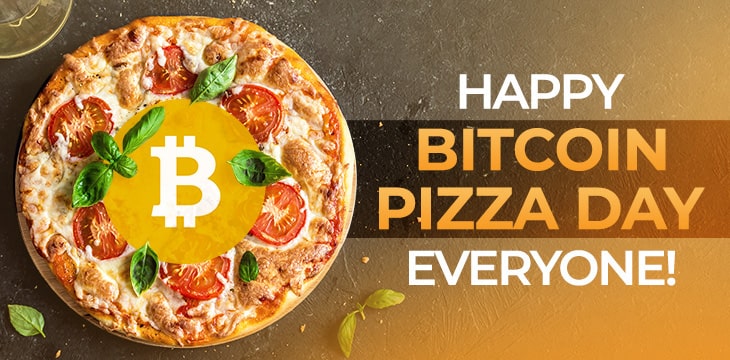Happy Bitcoin Pizza Day! Today, May 22nd, the crypto community is celebrating the anniversary of the first ever commercial bitcoin payment, which in hindsight turns out to be quite a costly affair.
Nevertheless, Bitcoin fans like to remember this day, not only because it illustrates the inimitable price development of the market-leading cryptocurrency, but also because many crypto investors from the very beginning can tell similarly strange stories.
The tragic hero of the original “Bitcoin Pizza Tag” is former miner Laszlo Hanyecz, who ordered two pizzas on May 22, 2010 for a price of 10,000 BTC. At the price of around 0.004 US dollars at the time, the associated, very first Bitcoin payment had an equivalent value of the equivalent of 40 US dollars.
Twelve years later, however, this calculation looks significantly different, because at the current Bitcoin rate of almost 30,000 US dollars, the pizza purchase today corresponds to a whopping 300 million US dollars. At first glance, a bitter potential loss, but Hanyecz takes the missed opportunity with humor.
Of a total of 100,000 BTC that the miner mined at the time, he says he spent almost half on pizza and the remaining half on other things, but the Bitcoin pioneer does not regret this apparent waste:
"With 100,000 BTC I would be a multi-billionaire today, but then I wouldn't have been able to eat as much pizza."
Benjamin de Waal of trading platform Swan Bitcoin also recalled a similar story from the cryptocurrency’s early days to Cointelegraph. Back then, de Waal paid 7 BTC for a family trip to Japan. That sum would have brought him about $200,000 today, but de Waal has no regrets about his payment either:
"Of course it would be worth a lot more at the moment, but that doesn't bother me. The fact that my children had an exciting childhood with lots of fun and adventure is priceless to me.”
Perhaps the Bitcoin Pizza Day also reminds crypto investors a bit that it is not just about hoping for a price increase in the future, but rather living for the moment, according to the motto: Better the pizza in the Hand as the bitcoin in the wallet!
My Top PicksHoneygain - Passive earner that pays in BTC or PayPalMandalaExchange -The Best no KYC crypto Exchange!
BetFury - Play And Earn BFG for daily Bitcoin and ETH dividends!
Pipeflare - Faucet that pays in ZCash and Matic, Games pay in DAIWomplay - Mobile dApp gaming platform that rewards in EOS and BitcoinCointiply - The #1 Crypto Earning SiteLiteCoinPay -The #1 FaucetPay earner for LitecoinLBRY/Odysee - YouTube Alternative that lets you earn Money by viewing videos!FaucetPay - The #1 Microwallet PlatformFREEBTC - The #1 FaucetPay earner for Satoshi'sFaucetCrypto - An earning/faucet site that pays out instantlyFireFaucet - An earning site that pays better for some than Cointiply
DogeFaucet - Dogecoin Faucet
xFaucet - BTC, ETH, LTC, Doge, Dash, Tron, DGB, BCH, BNB, ZEC, FEY - Claim every 5 minutes
Konstantinova - BTC, ETH, LTC, Doge, Dash, Tron, DGB, BNB, ZEC, USDT, FEY, 25 Claims Daily


Comments
Post a Comment